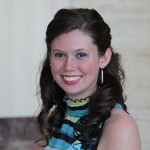 By Heather Williams
By Heather Williams
Have you ever considered the impact a local newspaper has on a community?
Newspapers today have a bigger responsibility to their community. In some communities, the local newspaper is the only media source. The paper not only has a traditional print audience, but it also has a digitally dependent audience to reach as well.
With the rise of digital media technology, local papers find themselves at a crossroads of meeting the needs of their traditional print audience and their new digital-age audience.
West Virginia Uncovered, a Capstone course at West Virginia University’s (WVU) P.I. Reed School of Journalism, has recognized the need for a balance of print and digital journalism throughout the Mountain State and has taken proactive steps to promote digital journalism skills and print storytelling.
Uncovered is a multifaceted project serving a multitude of people. The project works with students to train them in telling multimedia stories while also teaching community journalists about digital journalism technologies and how to engage their community in media making. Through the program, community members learn basic digital skills through special projects in their community.
Uncovered’s mission is to “cultivate online innovation and storytelling among the Mountain State’s community newspapers.” The project works with community papers like The Pocahontas Times, which has 17,000 online readers and 4,900 print readers, to attract a younger audience while maintaining their traditional audience.
The project has 16 partner newspapers around the state. Each semester a team of students is assigned to a community newspaper where they will uncover an untold, unique story and promote digital media. Uncovered provides community newspapers with the necessary resources, such as video, audio and photography, to help the newspaper reach its traditional print audience as well as the young digitally inclined audience.
MaryKay McFarland, the West Virginia Uncovered project coordinator, says that Uncovered is also fulfilling the university’s mission of strengthening and giving back to the community. To successfully fulfill this mission, the project provides workshops for community journalists, community members and educators. The project provides journalists with training to disseminate news in a new way and to find new revenue streams. Pam Pritt, former editor of The Pocahontas Times, says the workshops were very beneficial to her and her staff, and they learned a lot from it.
In addition to the newspapers, Uncovered provides educators with the necessary basics, such as photo, video and blog capabilities, to take back to the classroom. “This is the future of how we communicate,” McFarland says. “It is important that the basics be included in the students’ curriculum.”
McFarland believes with this kind of knowledge the students of West Virginia will be competitive with students in other states and will be encouraged to express their views and interests and have a voice in their community.
The project also provides workshops for community members, teaching them the basic digital skills from digital photography to blogging in order to share what they love, whether that is recipes, photos or the history of the area, and strengthen their interaction with each other as a community.
While Uncovered’s impact on community newspapers and communities as a whole is profound, the impact the project has on its students is also substantial.
“There is no class like this,” says Mary Power, a graduate student at WVU’s P.I. Reed School of Journalism. “You gain unique skills, work with unparalleled technology and help develop skills.”
The skills gained from the project give students an abundance of abilities, making them an expert or at least proficient in a skill set. “The body of work that Uncovered helped me produce helped me get a job on camera and get into graduate school,” Power says. She also says that a student can gain nothing but positive things from the project, such as ethics.
Students have seven weeks to work with a community paper to create a story. “Editors are key to a great story,” Power says. “They point to good sources.”
With each story the students are challenged. Going into a community, the students must be well-prepared. Oftentimes they face the absence of cell phone coverage, requiring them to be prepared to track their source by foot. Lack of Internet also challenges the students in multimedia coverage. “It’s trial-and-error,” Power says, “but we get support from MaryKay McFarland and from each other. We work together.”
Power says she had never before considered the importance of the local newspaper. “They are our last line of defense,” she says. Working with a community newspaper has a noticeable impact on the students. The benefit of working with a small community paper, rather than a larger newspaper, is that students tend to receive more feedback on their stories. “It is fun to see the kids respond to the good feedback they receive from the community members,” McFarland says.
Before traveling to a community, the students research the area and talk with the editors about story ideas. The magnitude of a story is not realized until it is written. McFarland notes that one of the more powerful stories written was “A Mother’s Journey.” The story was based on the trials and struggles that a 92-year-old Roane County woman, Marjorie, faced while caring for her two children born with the genetic birth disorder Phenylketonuria. “This was good storytelling,” McFarland says.
With the skills and experience the students receive from Uncovered, they enter the industry thoroughly equipped.
“Students have a good track record of finding jobs,” McFarland says. “They have gone on to do exciting things.”
Tricia Fulks, a founding student of the Uncovered project, is one of the many examples of how Uncovered prepares students for the industry. After graduation, Fulks interned with Sarasota Magazine in Florida, later returning to the Mountain State as a VISTA volunteer with Uncovered. Fulks took an editor’s position at The Shepherdstown Chronicle, followed by a city editor position at The Martinsburg Journal.
Uncovered’s impact does not end with its students or partner newspapers.
On April 5, 2010, the Upper Big Branch mine disaster changed the lives of 29 families forever. After the disaster, the community was bombarded with numerous news outlets and reporters and then left with the lifelong effects of the disaster. Two Uncovered students, Paige Lavender and Evan Moore, along with VISTA volunteer Katie Griffith, were compelled to create a place for families to remember those who were lost.
Lavender, Moore and Griffith created a Web site as an interactive memorial for the community named Faces of the Mine. Each of the 29 miners has his own page with a short biography and a place for families to post photos and other content. The site also includes various news clips and media coverage of the disaster.
“A huge portion of the work was gaining the trust of the community,” Moore says, “and showing them that we were building this site for them and not for our own purposes.”
The first semester of the project was spent meeting and talking with the community about the kind of Web site they would actually use and building enthusiasm around the idea.
“The Faces of the Mine team built more than a site,” McFarland says. “They built an online community on Facebook in order to build momentum for the site.”
Today, the Faces of the Mine site is completely community-driven. The site also has an active Facebook and Twitter account.
To learn more about Faces of the Mine or the Upper Big Branch Miners Memorial, visit www.facesofthemine.com.
To learn more about the West Virginia Uncovered project, how to partner with them or view their story collection, visit wvuncovered.wvu.edu.
About the Author
 Heather Williams is an English journalism major at Concord University. While at college, she is a staff writer for the university’s newspaper, The Concordian. Williams is the media representative for Campus Crusade for Christ and a member of the Sigma Tau Delta English Honor Society.
Heather Williams is an English journalism major at Concord University. While at college, she is a staff writer for the university’s newspaper, The Concordian. Williams is the media representative for Campus Crusade for Christ and a member of the Sigma Tau Delta English Honor Society.








